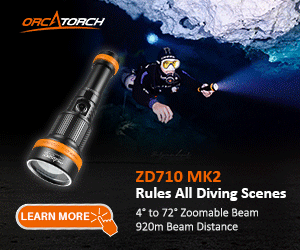Now, if you'd like to unpack the MUCH easier, that could be a distinguishing difference to outbalance the preference underwater for sidemount.
Yes, I've not been to Coz.
Typically the dive boat, which is a tiny outboard skiff with 6 divers, pulls up to an approximation of the dive site and starts drifting. Divers gear up and sit three on a side, and back roll into the water as closely together as possible. Keep in mind that there is a current, and so any delay in getting the divers into the water can take the boat further away from the site. This varies from site to site and from day to day.
Once everyone is in the water, which happens very quickly, the divers immediately descend together to get to the reef. If one of the divers is still fudging around to get a 2nd tank rigged, the group can easily get separated. Keep in mind that the current changes from the surface to depth.
Sidemount ALWAYS takes some time to gear up in the water. Then there is the gear check, which any responsible diver is going to do. That means having a sidemount-savvy buddy check clips, bungees, hose routing, etc. again, in the water, with everyone else waiting arounf while the group drifts away from the intended site.
Then there's the dive itself. There is current to deal with, and lots of small interesting swim throughs, lots of opportunities to poke around reef openings and ledges. Any two tank set up is far more cumbersome and less streamlined in the water than a single tank. That's simply a fact of less bulk and mass being carried around. And considering the fact that everyone else on the dive is diving single tanks, what's the point of having two tanks? The answer is, there is no point. This is buddy team diving in warm, clear, open water. If someone can't do that safely with a single tank, then they have real problems as a diver. Sorry if I've offended anyone.
Okay, now we get back to the boat. There are two typical ways of getting out of the water and into the boat. First, divers surface near the boat and grab a line on the side. Then they either take off their fins and weights, hand them up, and climb up the ladder with BC in place, or unclip the BC and the captain hauls their BC aboard, then they remove fins and climb up. Doing that with twin tanks is twice the work, and usually sidemount divers will use both hands in the process of stowing regulators, unbungeeing (is that a word?

) and unclippling. Ok, so you have to do that while hanging onto the line so that you don't drift away from the boat.
Then there's the issue of getting tanks rigged. Do you want opposing valves? How about adjusting the rigging? That's something else to deal with for both the dive op (I don't know how it is for them to get opposing valve sets) and the diver, who will have to re-rig the tanks every day, because usually in Cozumel you don't use the same cylinders day after day.
As I have said a few times on this thread, I am an avid sidemount diver in the Mexican cave systems. It's perfect for that; you need redundancy, you are hand-carrying tanks down rickety stairs (when there are stairs) to the cenote, you're gearing up in very shallow water with a good stable confined area to do equipment checks, and of course, the cave topography lends itself to sidemount; lots of passages that are vertically tight but have plenty of room horizontally. TOTALLY different scenario than a cozumel reef dive off a small skiff.
You say you have a preference for sidemount underwater...ok, I can see that, but the real comparison would be between sidemount and back mount doubles. Those are systems with somewhat comparable uses; technical diving, bigger gas requirements, redundancy, etc....comparing either to single tank is just not really useful in my opinion. There are dives when it's appropriate to bring double tanks and others that are appropriate for single tanks. I just don't get why someone would want to force the issue and use doubles-any kind of doubles- for single tank diving.



